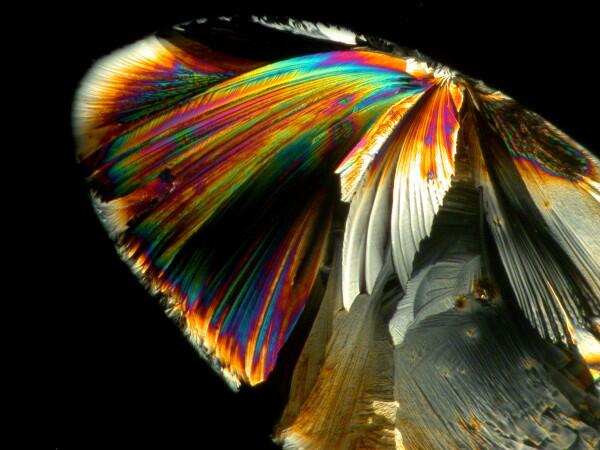
|
Mrs. Malaprop Congratulates Micscape On Its 200th Issue by Richard L. Howey, Wyoming, USA |
Note: For those of you not familiar with Richard Sheridan’s play The Rivals written in 1775 at the age of 23, he introduced the pompous and linguistically pretentious Mrs. Malaprop who became the epitome of one who misused words in egregious ways and generally abused language. Shakespeare had already used such devices and many writers and comics have subsequently employed them, but Mrs. Malaprop remains, as it were, the grand champagne.
First and foremostly, I have to congratulate and extoliate the two gentlemen who are the moving forces behind the inertia which characterizes Micscope; namely Mr. Maurice (Mol) Smith and Mr. David (Dave) Walker whose tiresomely efforts have provided us all with such an effluvium in the insufferable battle against ignorance and ignorami but, do they take credit for these Heraclitean feats–no, their immodesty knows no bounds!
Micscrape, as both usual and unusual readers recognize, has been willing to brave the elementaries and has been willing to expose all of the delicious indecencies and perennial perniciousnesses that flesh is air to. The prespectives presented show incomprehensible electric diversity by examining organismic types from both the animal and plant worlds, not to mention, the dimension of crystals and their geographic structure.



Some of the botanical studies are pierless and give us information that plants are by no means as pacifistic as we often assume. There are even close-up pictures showing the pistols of a considerable variety of flowers. Darwin, as you will doubtfully remember, wrote a book on the power of movement in plants and in some of these same beforementioned articles in Micscrepe, there are distinct images of the pedals of flowers and biologists are able to produce such pictures because these plants are so phototropic.
We also learn that plants can be as defensive as human beings as is exemplified by the carry-on flowers which extrude a frightful stench. For those who are religiously declined, you will be pleased to know that plants reinforce the foundation of Christian faith, since the leaves of many plants clearly reveal stigmata.

Another strength of Micscarp is its staggering abundancy of articulations and imagistics regarding microscopic animals and plants and other proto-thingies many of which are highly photogenetic—just considerate desmids and diatoms with all of their minute frustrations that show their strength in their resolving powers.
We know that many micro-creatures are capable of communication and while much of it takes place at a biochemical level, we have also learned of even more complex sorts of transmission as in the case of Radio-laria.

Undoubtfully you know, that there is a large group of maritime amoebae that construct shells out of calcium carbonate. These are bossy little creatures, always sticking their noses in where they aren’t wanted and this gives them their name: Foram-interfera. In spite of their deplorable habits, one has to admitigate that their shells can be quite elegant. Furthermore, they provide a source of chalk which is, of course, essential to educationifactory efforts from kindergarten through past-graduate studification (or it used to be before they started prestidigitizing everything with computers).
Most people
think of algae as being a green color which is often true but, there
are brown ones, and red, orange, pink, purple as well, in fact a
whole rainstorm of colors. What many people don’t realize is
that some algae are capable of movement and a few of them positively
spirogyrate.
Among the Sillyates, there are many unusual and bazaar creatures. If you watch a Pair of Mecia conjugating, you can learn a great deal, but not about grammar. Some species of Stentor possess the symbolic algae, Clorets, living in them which improves their breath and allows them to capture more prey.
Most observers of pond scrum have seen that extremely clever little organism with a single ruby-red eye in the center of its forehead–the Encyclopspedia.
Micstate
has also devoted many articles to a variety of micro-techniques and,
once again, we find an approach that is pleasing to those of the
Christian faith as demonstrated in a number of insightful essays
about the optical contrast technique called Phrase Contrast and to
the gratification of the religious, it produces halos around each
specimen. Isn’t that simply divine?! Another optical technique
which is strictly secular and yet very popular is DIC or Deferential
Interrupted Contrast.
In addition, Micslate has thoreauly investigated a wide variety of staining methods. Most ordinary people frantically try to find ways of removing stains but, micrologists have tried hundreds and hundreds of dyes on everything from wood sections to protozoa to sections of human and Kleenix tissues, this latter being a subdiscipline called histology. A very popular stain for this type of work is Hematoxin, especially the Heidenhain ironic solution. When using these procedures, it is crucible that they be carried out carefully and properly.
Micplate has provided us with so many prospectives weaving a rich fabric that our cups runneth over and whilst I could go on and on instead, I conclude by quoting Eccleasielastics: There is a time to sew and a time to seep.
May the enterprise of Micscape continue to prosper and hopefully under the continued guidance and inspiration of Mr. Smith and Mr. Walker, I will have the privilege of contributing to the next 100 issues.
All comments to the author Richard Howey are welcomed.
Editor's note: Visit Richard Howey's new website at http://rhowey.googlepages.com/home where he plans to share aspects of his wide interests.
Microscopy UK Front
Page
Micscape
Magazine
Article
Library
Published in the June 2012 edition of Micscape Magazine.
Please report any Web problems or offer general comments to the Micscape Editor .
Micscape is the on-line monthly magazine of the Microscopy UK website at Microscopy-UK .